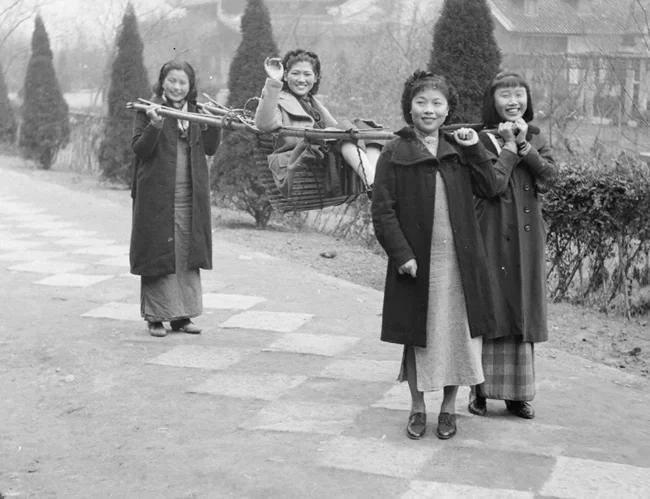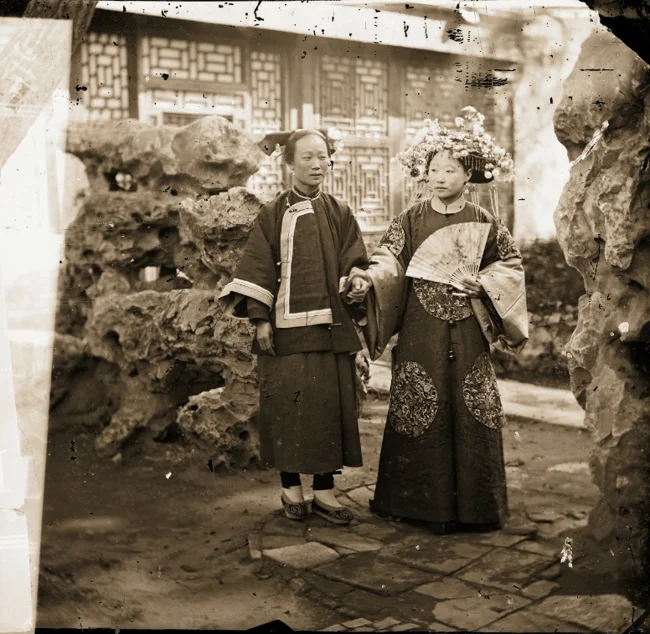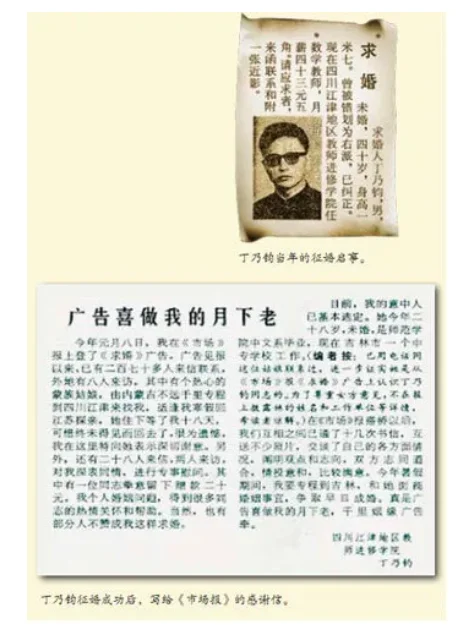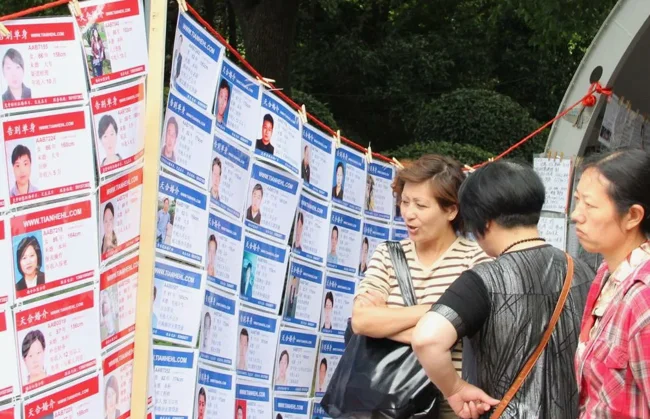How Chinese Marriage Ads Have Changed in 100 Years (8 photos)
In ancient China, couples were chosen by the elders of the family, there was no talk of any love. In China, there is even a saying to this day: "by order of parents, by word of matchmaker." In those years, choosing a spouse on your own was nonsense. 
90-10s - the time when the Chinese went to disgrace themselves in love shows on TV
But then the 20th century came, and the young people got the right to vote to find their own destiny. And so began China's favorite way to find a partner: the marriage advertisement, or zhenghun guangao.
When it all began
The first marriage advertisement in China was published on June 26, 1902, in the Kung Pao newspaper. A man who called himself a "patriot from the South" publicly sought a marriage partner and made three demands of his soulmate:
"First, she must have natural feet (foot binding was still common at the time). Second, she must be skilled in both Chinese and Western academic disciplines. Third, the wedding ceremony must follow civilized customs, completely excluding outdated Chinese practices." 
Girls supposedly carrying a girl with lotus-bound feet
The mysterious groom added:
"Anyone who meets all the above criteria, is willing to marry of his own free will and has complete autonomy is suitable. Be it Manchu or Han, rich or poor, noble or common, young or old, handsome or ordinary."
At the time, this was a novelty, even revolutionary in its own way. Everyone bought the newspaper just to read such a miracle. For the sake of circulation, another newspaper, "Juriversal", reprinted the ad and called it the most civilized marriage proposal in the world. 
A photo of a girl in formal attire, to get acquainted. An expensive thing, a wealthy girl!
However, it (even then!) was not liked by feminists. They said that the ad contained hidden chauvinism, because the author only demands, but does not say anything about what he can offer. As if being a man is enough.
Whether that southern patriot found a partner – history is silent.
And off we go!
Between 1920 and 1939, the Kung Pao newspaper repeatedly published increasingly bold marriage advertisements, everyone was testing the waters – is it effective? Is it really possible to get married like that?
Interesting statistics: 80% of the advertisements were from men. And the main requirements always concerned age, wealth and work. As always, men put age first, and women financial stability.
All this is simply a reflection of very traditional ideas about marriage in China at the beginning of the last century.
A long marriage gap
After the founding of the People's Republic of China in 1949, marriage advertisements disappeared for more than three decades.
During this time, all private publishing houses, newspapers, and radio stations were taken over by the state. Their main job was no longer to distribute news or advertising, but to promote the principles and policies of the Communist Party. It was not until 1979 that Chinese newspapers began publishing ads again. 
A Blind Date for the Desperate, So It Seems to the Chinese
How Marriage Ads Changed in the 1970s
After nearly 40 years of silence, the first marriage ad was published in a daily newspaper in 1979. It was in the name of a 40-year-old math teacher named Ding Naijun.
In a long letter to editors, Dean described being labeled a "rightist" during the Anti-Rightist Campaign that began in 1959. Although he was exonerated, he still had trouble finding a partner because of his political views. 
An ad preserved in a print museum
This letter was a challenge to newspaper editors at the time. There had been no precedent for a marriage ad to be published since 1949! Because the ad touched on political issues, it became very famous.
The ad got Dean what he wanted. Within six months, he had received more than 270 letters from all over the country. He eventually married one of the respondents, a teacher at a nursing school in the provinces. Ding notified the newspaper editors of the good news, and they published his happy response.
And then the classifieds market literally exploded! What was missing was such an honest review of a successful experience, so that millions of Chinese would rush to this site.
From newspapers to television 
And here only aunties pick out bridegrooms and brides for each other!
Ten years later, television became widespread enough that marriage ads were already placed there. At the same time, they were a government service so that men from remote farms could find themselves wives.
At the same time, in the program, men simply stood in a row, introduced themselves and bowed - very simply and without the opportunity to advertise themselves. Moreover, for three months there were only men in this program, the women were too shy.
And the first woman who agreed to star in the program "looking for a spouse" was harshly condemned by her relatives. It's a disgrace to the whole country that they won't marry you!
When candidates found a partner through the program, they often sent gifts to the TV channel out of gratitude. However, the show was canceled after it was discovered that some participants had provided false information.
But then TV channels began filming their own dating shows similar to Western ones. Something like “Love at First Sight,” only there you also had to sing and dance. 
Oh, those shows from the late 90s and early 2000s, do you recognize them?
Everything changed in the 2010s, when a revolutionary show for Chinese TV appeared: “What if you are the One?” Where 24 girls would rate male guests in turn (we call this the equivalent of "Hearts for Love", as far as I understand).
Male guests were introduced via pre-recorded video clips and answers to questions about their values, interests, financial status, and more. As the show progressed, female guests could vote men out.
Many of the participants in this show have become Internet celebrities, so it's now more of a show than a real chance to find a partner, as it was in the 80s.
The Internet is now king
The first Chinese dating site was created in 2003, and today there are several hundred of them. Young people really like it, but not for serious relationships.
There is still a huge offline market for grooms and brides, run by the parents of the young. 
Oh, I can't read Chinese, but it would be very interesting to wander around their market. If the aunties don't chase me away
They come to Beijing's Longtan Park, where there is officially a "matchmaking corner", the first of its kind. And they post an advertisement for their child on A4 sheets, hoping that other parents will like the description. Over time, such markets appeared in many large cities, because children only date those whom their parent has approved. And that means that family support is guaranteed.
But this is a separate cultural phenomenon that has often been described.
By the way, even before the revolution, marriage advertisements in newspapers were very popular here. And how many weddings there were after correspondence!





















